The Alchemy of Adaptation
The marriage between literature and film has produced some of cinema’s most enduring masterpieces. While countless novels have made the journey from page to screen, only a select few have achieved that rare alchemy where the adaptation not only honors its source material but transcends it to become something uniquely cinematic. In this new series on our blog, The Alchemy of Adaptation, we will explore literature adaptations that didn’t just succeed—they redefined what it means to bring a beloved book to life on screen.
CLASSIC CHILDREN’S BOOKS ADAPTATIONS
There’s something uniquely challenging about adapting beloved children’s literature for the screen. These stories must navigate the delicate balance between honoring the innocence and wonder that captivated young readers while creating films sophisticated enough to enchant audiences of all ages. The best adaptations of children’s classics don’t just translate familiar stories; they preserve the magic that made us fall in love with reading in the first place.
Let’s explore ten remarkable adaptations that successfully brought childhood’s most treasured tales from page to screen, creating new generations of fans along the way.
1. The Secret Garden (1993)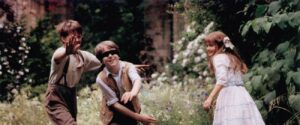
Frances Hodgson Burnett’s 1911 novel about healing, friendship, and the transformative power of nature found its definitive screen adaptation in Agnieszka Holland’s 1993 film. The story of Mary Lennox, a spoiled girl who discovers a hidden garden and learns to care for something beyond herself, required a director who understood both the story’s emotional depth and its connection to the natural world.
Holland’s adaptation succeeds by treating the garden itself as a character. The film’s visual transformation from the grey, austere Misselthwaite Manor to the explosion of color when the garden blooms mirrors Mary’s own emotional journey. Kate Maberly’s performance as Mary captures the character’s evolution from a bitter, lonely child to someone capable of empathy and love.
Maggie Smith’s portrayal of the stern housekeeper Mrs. Medlock adds gravitas to the proceedings, while the film’s exploration of trauma and healing resonates with adult audiences. The adaptation works because it doesn’t shy away from the novel’s themes of loss and recovery, recognizing that children’s literature often explores profound emotional truths.
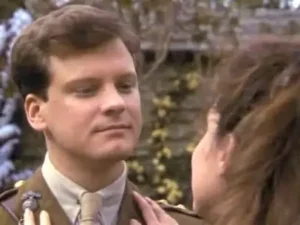 Honorable mention: It should also be said that the 1987 film adaptation is wonderful as well and happens to be the adaptation I grew up watching. It features the legendary Derek Jacobi, a beyond-intimidating Billie Whitelaw as Mrs. Medlock, and a beautiful young Colin Firth as adult Colin. While some women were introduced to Colin Firth as he walked out of the water in Pride and Prejudice, I was equally smitten when I saw him—a uniform-clad young man who returns to their garden to find his love. Be still my beating 7-year-old heart.
Honorable mention: It should also be said that the 1987 film adaptation is wonderful as well and happens to be the adaptation I grew up watching. It features the legendary Derek Jacobi, a beyond-intimidating Billie Whitelaw as Mrs. Medlock, and a beautiful young Colin Firth as adult Colin. While some women were introduced to Colin Firth as he walked out of the water in Pride and Prejudice, I was equally smitten when I saw him—a uniform-clad young man who returns to their garden to find his love. Be still my beating 7-year-old heart.
2. Anne of Green Gables (1985)
Some adaptations become so definitive that they’re inseparable from the source material. Kevin Sullivan’s 1985 adaptation of L.M. Montgomery’s beloved novel achieved this rare status, with Megan Follows’ portrayal of Anne Shirley becoming the character for millions of viewers worldwide.
This Canadian production understood that Anne’s appeal lies in her irrepressible spirit and her ability to find beauty and adventure in everyday life. Follows captures Anne’s dramatic tendencies and her gift for storytelling, while Colleen Dewhurst and Richard Farnsworth bring depth and warmth to Marilla and Matthew Cuthbert.
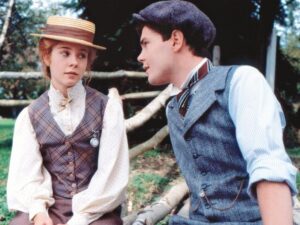 The bucolic Prince Edward Island setting becomes a character itself, with the production taking full advantage of the island’s natural beauty to create Anne’s world. The film adheres to the novel’s episodic structure while crafting a cohesive and compelling narrative arc that follows Anne’s transformation from an unwanted orphan to a beloved daughter.
The bucolic Prince Edward Island setting becomes a character itself, with the production taking full advantage of the island’s natural beauty to create Anne’s world. The film adheres to the novel’s episodic structure while crafting a cohesive and compelling narrative arc that follows Anne’s transformation from an unwanted orphan to a beloved daughter.
What makes this adaptation extraordinary is its understanding that Montgomery’s story is fundamentally about the power of imagination and the importance of finding where you belong. The film captures both Anne’s vulnerability and her strength, creating a character who feels both timeless and immediate.
3. Little Women (1994 & 2019)

Louisa May Alcott’s 1868 novel has been adapted numerous times, but Gillian Armstrong’s 1994 version struck a delicate balance between period authenticity and contemporary relevance. With Winona Ryder as the ambitious Jo March, the film captures the novel’s exploration of women’s roles and artistic ambition.
Armstrong’s direction emphasizes the novel’s themes of family loyalty, personal growth, and the tension between duty and desire. The film’s Civil War setting provides historical weight without overwhelming the intimate family story. The adaptation succeeds by understanding that Alcott’s novel is both a coming-of-age story and a meditation on what it means to be a woman with ambitions in a restrictive society.
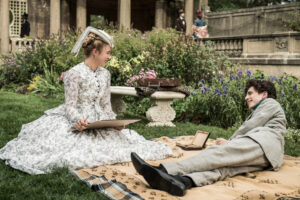 Another incredible adaptation was written and directed by Greta Gerwig, featuring a heavy-hitting cast and a lush, vibrant visual scheme. Gerwig does not shy away from the busting-at-the-seams energy that many young people feel when ambition, capability, and imperfect humanity push up against the constraints of the world around them. An almost-muscular and visceral energy thrums throughout the film, leaving as much of a lasting impression on today’s audience as the book has on readers for generations.
Another incredible adaptation was written and directed by Greta Gerwig, featuring a heavy-hitting cast and a lush, vibrant visual scheme. Gerwig does not shy away from the busting-at-the-seams energy that many young people feel when ambition, capability, and imperfect humanity push up against the constraints of the world around them. An almost-muscular and visceral energy thrums throughout the film, leaving as much of a lasting impression on today’s audience as the book has on readers for generations.
4. A Little Princess (1995)
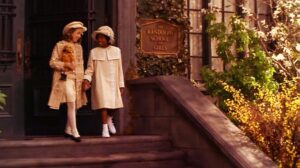 Alfonso Cuarón’s adaptation of Frances Hodgson Burnett’s 1905 novel demonstrates how a skilled director can bring fresh vision to familiar material. The story of Sara Crewe, a wealthy girl who must adapt to poverty and hardship, becomes a meditation on storytelling, resilience, and the power of imagination.
Alfonso Cuarón’s adaptation of Frances Hodgson Burnett’s 1905 novel demonstrates how a skilled director can bring fresh vision to familiar material. The story of Sara Crewe, a wealthy girl who must adapt to poverty and hardship, becomes a meditation on storytelling, resilience, and the power of imagination.
Cuarón’s visual style blends realism with fairy tale elements, using Sara’s storytelling abilities to create magical sequences that feel both fantastical and emotionally authentic. A young Liesel Matthews delivers a remarkable performance as Sara, capturing both her privileged innocence and her inner strength.
The film’s boarding school setting becomes a microcosm of society, with clear divisions between the wealthy and the poor. The adaptation works because it takes Sara’s belief in magic seriously while grounding the story in genuine emotion and character development. Cuarón understands that the “magic” in Sara’s stories reflects real human resilience and compassion.
5. Charlotte’s Web (1973)
E.B. White’s 1952 novel about friendship between a pig and a spider could have easily become overly sentimental, but the 1973 animated adaptation directed by Charles A. Nichols and Iwao Takamoto captures the story’s gentle wisdom and emotional depth.
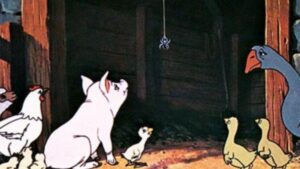 Debbie Reynolds’s voice work as Charlotte brings warmth and intelligence to the character, while the film’s simple animation style serves the story’s pastoral setting. The adaptation doesn’t shy away from the novel’s themes of mortality and the cycle of life, making Charlotte’s death genuinely moving rather than manipulative.
Debbie Reynolds’s voice work as Charlotte brings warmth and intelligence to the character, while the film’s simple animation style serves the story’s pastoral setting. The adaptation doesn’t shy away from the novel’s themes of mortality and the cycle of life, making Charlotte’s death genuinely moving rather than manipulative.
The film succeeds by maintaining White’s tone—warm but not saccharine, simple but not simplistic. It understands that children can handle complex emotions and profound themes when they’re presented with honesty and care.
6. Where the Red Fern Grows (1974)
Wilson Rawls’s 1961 novel about a boy and his hunting dogs required an adaptation that could capture both the adventure and the emotional weight of the story. Norman Tokar’s 1974 film succeeds by taking the story’s rural setting and hunting culture seriously while focusing on the bond between Billy and his dogs.
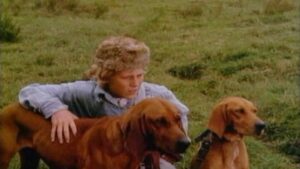
The cinematography brings the Ozark Mountains to life, creating a rich sense of place that’s essential to the story. The film doesn’t sentimentalize the relationship between boy and dogs—it shows the hard work, dedication, and genuine love that creates such bonds.
The film’s climax, involving the dogs’ fate, is handled with the same emotional honesty as the novel, creating a powerful statement about loyalty, sacrifice, and the pain of growing up. (Author’s Note: I remember reading this book in elementary school and absolutely weeping after Old Dan dies…a formative reading experience, to say the least!)
7. The Black Stallion (1979)
Walter Farley’s 1941 novel about a boy and a wild horse became a cinematic masterpiece in the hands of director Carroll Ballard. The film’s minimal dialogue and stunning cinematography create a meditative experience that captures the primal connection between human and horse.
The film’s first half follows Alec and the stallion’s survival on a desert island, unfolding with almost documentary-like realism. Mickey Rooney’s performance as the old trainer adds depth to the story’s second half, while Kelly Reno’s natural performance as Alec creates a believable young protagonist.
This adaptation succeeds because it inherently understands that Farley’s story is fundamentally about the mysterious bond between humans and animals, playing with a kind of visual poetry to serve this emotionally powerful theme.
8. The NeverEnding Story (1984)
 Michael Ende’s 1979 novel about a boy who becomes part of the story he’s reading presented unique challenges for adaptation. Wolfgang Petersen’s film creates a compelling fantasy world while maintaining the story’s meta-fictional elements about the power of storytelling and imagination.
Michael Ende’s 1979 novel about a boy who becomes part of the story he’s reading presented unique challenges for adaptation. Wolfgang Petersen’s film creates a compelling fantasy world while maintaining the story’s meta-fictional elements about the power of storytelling and imagination.
The film’s practical effects and creature design create a world that feels both alien and familiar. The story-within-a-story structure allows the film to explore themes about the importance of stories and imagination in our lives.
This adaptation works so well because it takes both the fantasy elements and the real-world frame story seriously, showing how stories can literally save lives, be they fictional or real.
9. Matilda (1996)
Roald Dahl’s 1988 novel about a gifted girl with telekinetic powers found perfect expression in Danny DeVito’s 1996 adaptation. The film captures Dahl’s subversive humor and his sympathy for children who must deal with awful adults.
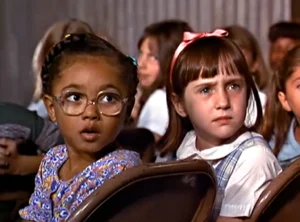 Mara Wilson’s performance as Matilda creates a character who’s both incredibly intelligent and genuinely childlike. The film’s exaggerated visual style aligns with Dahl’s storytelling approach, while the telekinetic elements support the story’s themes of standing up to bullies and fighting for what is right.
Mara Wilson’s performance as Matilda creates a character who’s both incredibly intelligent and genuinely childlike. The film’s exaggerated visual style aligns with Dahl’s storytelling approach, while the telekinetic elements support the story’s themes of standing up to bullies and fighting for what is right.
The adaptation succeeds by maintaining Dahl’s anarchic spirit while creating genuine moments of warmth and connection, particularly in Matilda’s relationship with Miss Honey.
10. Paddington (2014 & 2017)
Michael Bond’s beloved bear from darkest Peru made his cinematic debut in Paddington (2014), directed by Paul King, with a sequel that many consider one of the rare examples of a follow-up surpassing the original. Both films pull off the miraculous feat of updating Paddington’s old-fashioned charm without losing an ounce of sincerity or warmth.
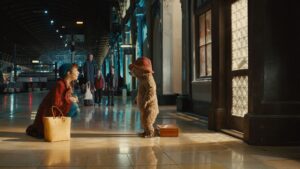 Voiced with gentle wit by Ben Whishaw, Paddington becomes an emblem of kindness, curiosity, and immigrant resilience. The films’ whimsical visual style, clever physical comedy, and meticulously crafted sets echo the storybook aesthetic while offering sharp commentary on belonging and community.
Voiced with gentle wit by Ben Whishaw, Paddington becomes an emblem of kindness, curiosity, and immigrant resilience. The films’ whimsical visual style, clever physical comedy, and meticulously crafted sets echo the storybook aesthetic while offering sharp commentary on belonging and community.
Crucially, the Paddington films never mock their source material—they elevate it. They understand that honoring a children’s classic means embracing earnestness in a world often allergic to it. In doing so, they remind audiences—young and old—that politeness, marmalade, and a well-meaning heart can go a long way.
The Enduring Magic of Childhood Stories
Children’s literature offers some of the richest material for filmmakers willing to take young audiences seriously. The best adaptations understand that children’s stories often deal with profound themes—loss, growth, courage, friendship, and the power of imagination—and that young viewers are capable of engaging with complex emotions and ideas. They don’t talk down to children or oversimplify themes. Instead, they create cinematic experiences that capture the wonder and wisdom that make children’s literature so enduring, proving that children’s stories are really stories for everyone.
These films don’t just adapt beloved books; they preserve the magic of childhood reading while creating new magic for the screen. They remind us why we fell in love with stories in the first place and ensure that future generations will continue to discover the transformative power of great storytelling, whether on the page or on the screen.
Written by Christine Weber Rivera




